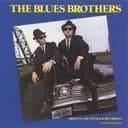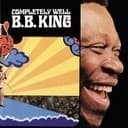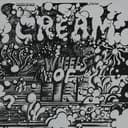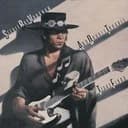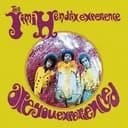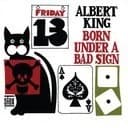Understanding F♭ Blues requires grasping the concept of enharmonic equivalence—different note names that produce identical pitches on modern equal-tempered instruments. F♭ sounds exactly like E, G♭♭ sounds like F, A♭♭ sounds like G, and so forth. This scale exists primarily in theoretical discussions about key relationships and transposition logic, particularly in contexts where maintaining consistent flat notation is prioritized over practical readability. In real-world performance contexts, the E Blues Scale is universally preferred because it uses natural notes (E, F♯/G♭, G, A, B, D) that are immediately recognizable to musicians. The complexity of reading double flats in F♭ notation creates unnecessary obstacles for sight-reading, improvisation, and communication among ensemble members. However, studying enharmonic relationships like F♭/E deepens your understanding of music theory's internal logic and helps explain why certain keys appear in theoretical exercises but rarely in practical repertoire. The blues scale's emotional expressiveness and improvisational flexibility remain identical regardless of notation—the characteristic "bent" blue note between the 4th and 5th scale degrees creates the same soulful tension whether written as A♭ and A in F♭ or as G♯/A and A in E.
Enharmonic Equivalents and Practical Usage
The F♭ Blues Scale demonstrates why enharmonic thinking matters in music theory while also revealing its practical limitations. While F♭, C♭, and G♭ appear occasionally in advanced classical repertoire (particularly in pieces that modulate through flat key areas), F♭ Blues is essentially never used in blues, jazz, or rock contexts—genres where the blues scale originated and flourishes. Instead, musicians work comfortably with the E Blues Scale, which contains the same pitches but uses standard notation (E-F♯-G-A-B-D). If you encounter F♭ Blues in theoretical exercises or transposition charts, mentally convert it to E Blues immediately for practical application. This conversion skill—recognizing enharmonic equivalents and choosing the clearest notation—is essential for working musicians. When comparing blues scales across keys, note that E Blues sits naturally between D Blues and F Blues, making it a common middle ground for blues guitarists who frequently use open-string voicings in E. The relationship between F♭ and E also illustrates broader principles about enharmonic key relationships in Western music theory.
Improvisation Techniques
When improvising with what's written as F♭ Blues (but practiced as E Blues), focus on the scale's characteristic intervals and emotional vocabulary rather than notation. The blues scale excels over dominant seventh chord progressions, particularly the 12-bar blues form in E (E7-A7-E7-B7-A7-E7). The "blue note"—the ♭5 interval (A/B♭♭ in F♭ notation, but simply A in E)—creates chromatic tension that resolves beautifully to either the 4th or 5th degree. Master this by approaching the blue note from above and below, using techniques like bending, sliding, and vibrato to capture the microtonal inflections fundamental to authentic blues expression. Experiment with call-and-response phrasing, where short melodic statements are answered by variations or contrasting ideas. Rhythmic variation is equally important—use triplets, shuffle feels, and syncopation to create groove-oriented lines that lock with the rhythm section. Combine the blues scale with the E Minor Pentatonic (removing the blue note selectively) for melodic variety, or explore mixing it with E Mixolydian for more sophisticated jazz-blues approaches.
Blues Scale Relationships and Progressions
The F♭/E Blues Scale works seamlessly over standard blues progressions, functioning effectively over all chord changes in a typical I-IV-V blues structure. In E (the practical key), this means the blues scale works over E7, A7, and B7 chords simultaneously—a remarkable feature that makes the blues scale accessible for beginning improvisers. The scale's notes relate to these dominant seventh chords in complementary ways: some notes are chord tones (providing stability), while others are tensions (creating interest and forward motion). Practice emphasizing chord tones (E, G♯/A♭, B, D) on strong beats while using the blue note and other scale tones as passing notes or anticipations. Beyond the standard 12-bar form, the blues scale applies to one-chord vamps, funk grooves, rock progressions, and jazz-blues contexts that incorporate extended harmonies and substitutions. The relationship between blues scales in different keys also matters—E Blues sits a perfect fifth below B Blues and a perfect fourth above A Blues, making these related keys natural modulation points for extended improvisations or compositions.
Historical Context and Artist Applications
While no professional musician has ever labeled their work as being in "F♭ Blues," countless artists have mastered the identical-sounding E Blues Scale as a cornerstone of their musical vocabulary. Eric Clapton's legendary "Crossroads" performance showcases E Blues at blistering tempos with precise articulation and dynamic phrasing. Jimi Hendrix's "Red House" demonstrates the scale's capacity for deep emotional expression, using sustained bends and feedback to push beyond traditional blues boundaries. B.B. King's economical approach to the blues scale— often playing just a few carefully chosen notes with immaculate vibrato— proves that mastery comes from nuance rather than complexity. Stevie Ray Vaughan combined blues scale patterns with aggressive string bending and shuffle rhythms in songs like "Pride and Joy," creating the Texas blues sound that influenced generations of guitarists. Jazz musicians from Charlie Parker to Miles Davis incorporated blues scales into bebop and modal jazz contexts, expanding the scale's harmonic possibilities. In rock music, the blues scale became foundational vocabulary for guitarists in Led Zeppelin, The Allman Brothers Band, and countless other acts. This rich history demonstrates that the blues scale's power lies not in its theoretical notation (F♭ versus E) but in how musicians use it to express emotion, build tension, and connect with audiences across stylistic boundaries.
